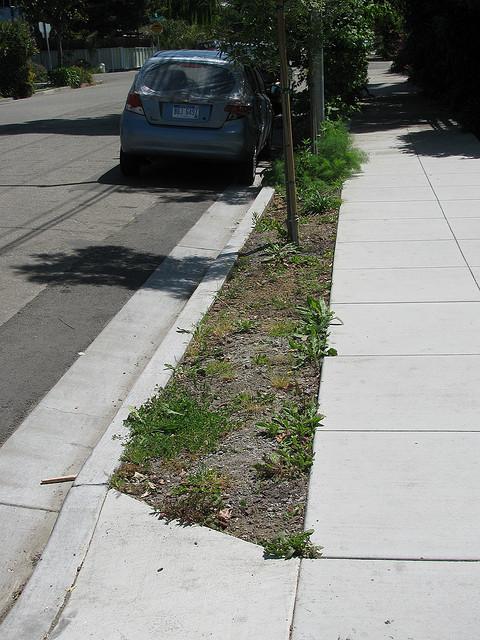Parking strips can be either water conserving or weed magnets. Parking strips are often “out of sight, out of mind” for many homeowners, especially in older neighborhoods without pressurized irrigation systems and can quickly become weed magnets.
Dragging a hose across the sidewalk is inconvenient and possibly dangerous to pedestrians.
One way to address this issue is to create a water conserving park strip. A water conserving parking strip is simply a parking strip that uses less water than typical turf and street tree parking strips located in most communities.
The parking strip area can simply be a gravel filled strip or a lush highly designed perennial bed and can include ornamental as well as edible plants. Low water using turf species can be planted and are easy to maintain.
Remember, however, that water is still needed during the one to two year establishment period. Also, be aware that access to and from parked vehicles across the parking strip is often needed

Controlling Weeds
Poorly maintained or neglected parking strips can quickly become weedy. A simple parking strip with few plants can be a low maintenance option. For these types of parking strips, consider using weed barrier fabric and use appropriate herbicides to control weeds.
For a more attractive parking strip, planting appropriate perennial plants closer together can help reduce unwanted weeds.
Some municipalities require that only certain trees be planted. Generally, those that do not create problems with roots heaving concrete sidewalks and creating safety hazards are recommended.
Trees are not recommended for narrow park strips due to restriction on root growth from insufficient water to the root zone.
Check city ordinances for guidelines and restrictions on removing or replanting the parking strip.
Additional Resources:
West
Utah Water Savers: Flip Your Strip
